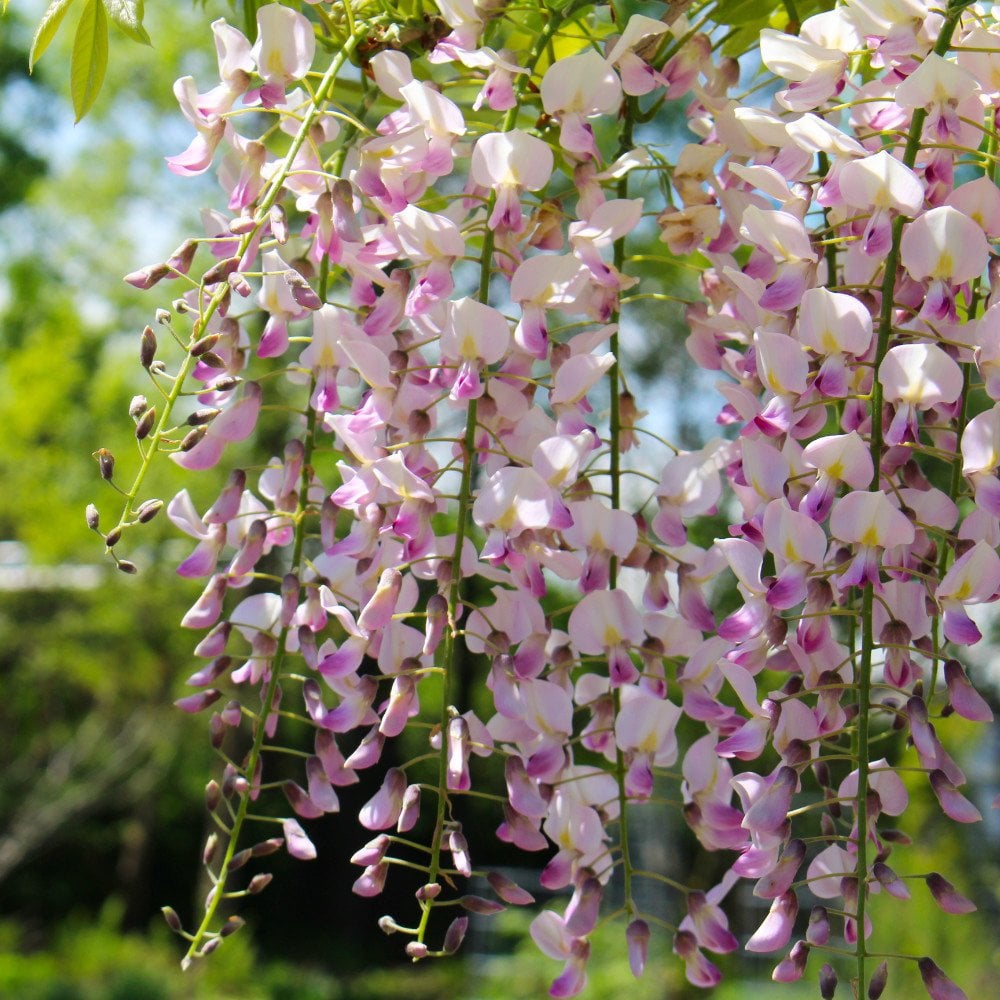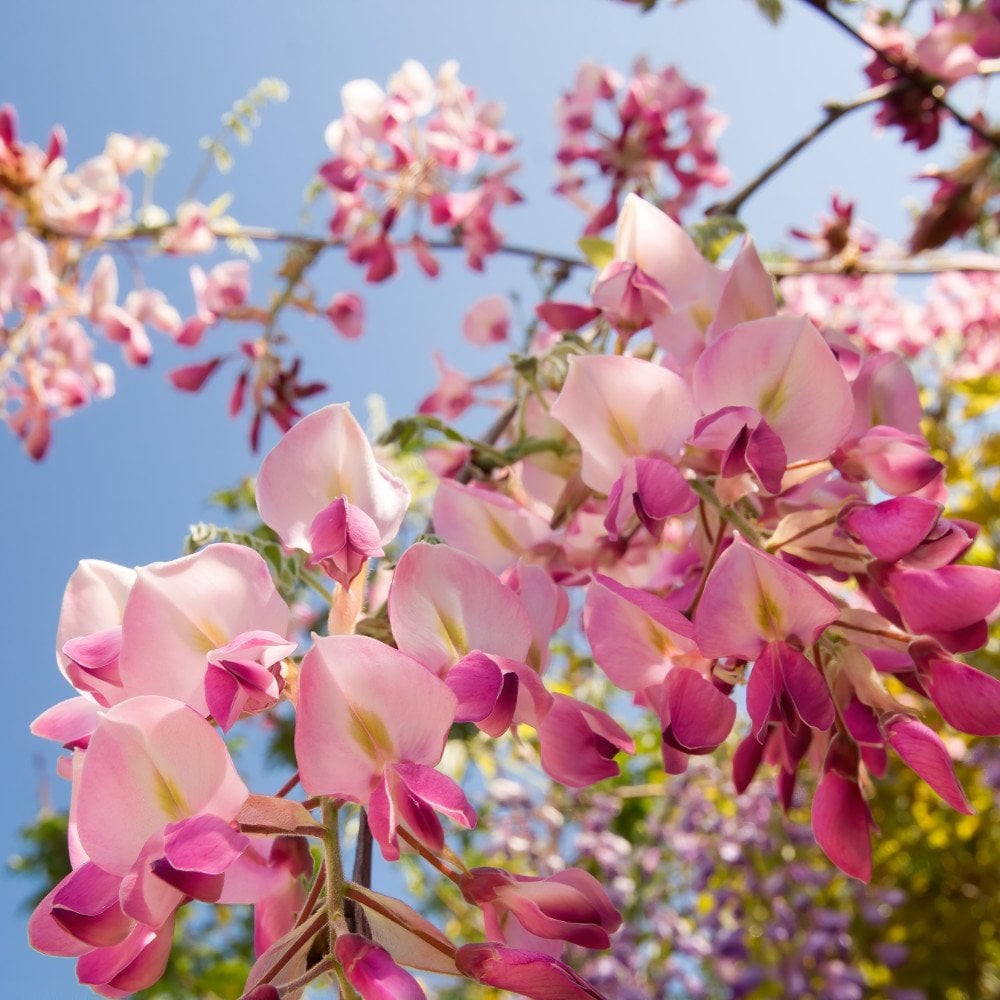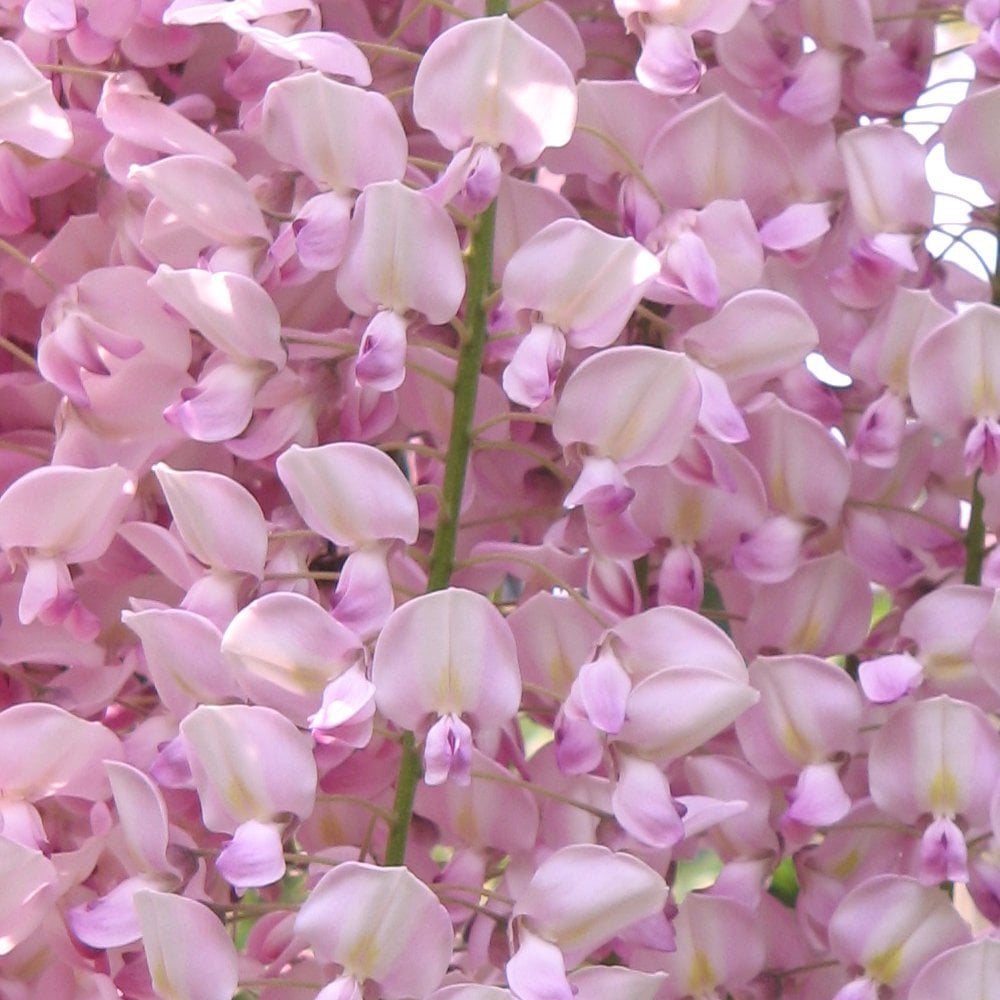Wisteria floribunda 'Rosea' Tree
Wisteria floribunda 'Rosea' Tree
Pink Climbing Wisteria
Climber, 150-180cm, 7.5L pot
Ready by: 31 March 2025
Pre-order: Ready Spring 2025



Key features




Description
A beautiful pink flowering Japanese Wisteria, Wisteria floribunda 'Rosea' boasts long racemes of pink pea-like flowers in the summer against mid-green foliage that turns yellow in autumn. This Pink Wisteria makes a great addition to a wildlife garden as it is attractive to bees, butterflies and other pollinating insects.
Wisteria floribunda 'Rosea' is a twining, climbing plant that can be grown up to 7 x 4 metres in 20 years and looks fabulous grown over a pergola or up a wall. Wisteria like a position in sun or dappled shade, and prefer a moist but well-drained soil.
Enjoy the wonderful pink flowers earlier, as all our Wisteria are grafted and tend to flower younger than those grown from cuttings.
AKA Wisteria floribunda 'Hon-Beni', Pink Wisteria tree, Pink Japanese Wisteria
| Small shrubs (1-3) | Young trees & 4+ small shrubs | Select semi-mature trees & shrubs (1-4) | All other mature trees (any quantity) | |
|---|---|---|---|---|
| Mainland UK ex. Scottish Highlands | £10 | £12 | £35 | from £55 |
| Scottish Highlands & the Islands | From £30 | |||
| Outside Mainland UK | Currently we are unable to deliver outside of Mainland UK | |||
Product Details
Key features




Description
A beautiful pink flowering Japanese Wisteria, Wisteria floribunda 'Rosea' boasts long racemes of pink pea-like flowers in the summer against mid-green foliage that turns yellow in autumn. This Pink Wisteria makes a great addition to...
A beautiful pink flowering Japanese Wisteria, Wisteria floribunda 'Rosea' boasts long racemes of pink pea-like flowers in the summer against mid-green foliage that turns yellow in autumn. This Pink Wisteria makes a great addition to a wildlife garden as it is attractive to bees, butterflies and other pollinating insects.
Wisteria floribunda 'Rosea' is a twining, climbing plant that can be grown up to 7 x 4 metres in 20 years and looks fabulous grown over a pergola or up a wall. Wisteria like a position in sun or dappled shade, and prefer a moist but well-drained soil.
Enjoy the wonderful pink flowers earlier, as all our Wisteria are grafted and tend to flower younger than those grown from cuttings.
AKA Wisteria floribunda 'Hon-Beni', Pink Wisteria tree, Pink Japanese Wisteria
Planting & Care
Delivery Information
| Small shrubs (1-3) | Young trees & 4+ small shrubs | Select semi-mature trees & shrubs (1-4) | All other mature trees (any quantity) | |
|---|---|---|---|---|
| Mainland UK ex. Scottish Highlands | £10 | £12 | £35 | from £55 |
| Scottish Highlands & the Islands | From £30 | |||
| Outside Mainland UK | Currently we are unable to deliver outside of Mainland UK | |||
MORE TO GROW YOUR GARDEN
















